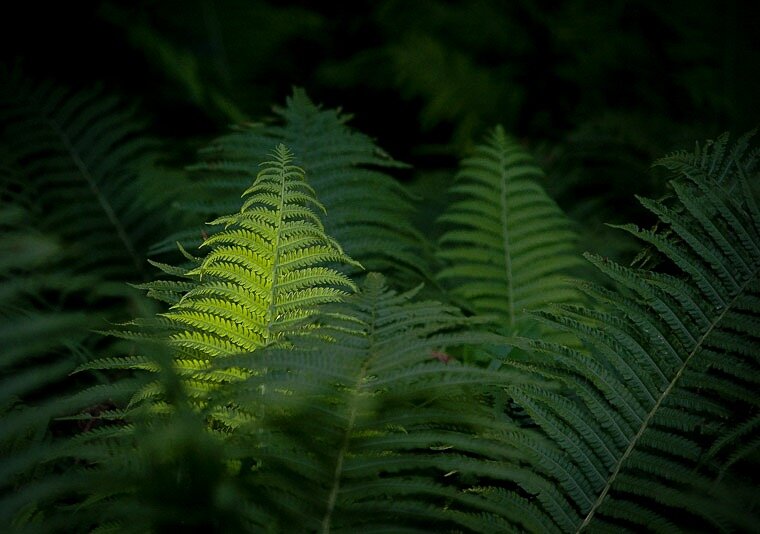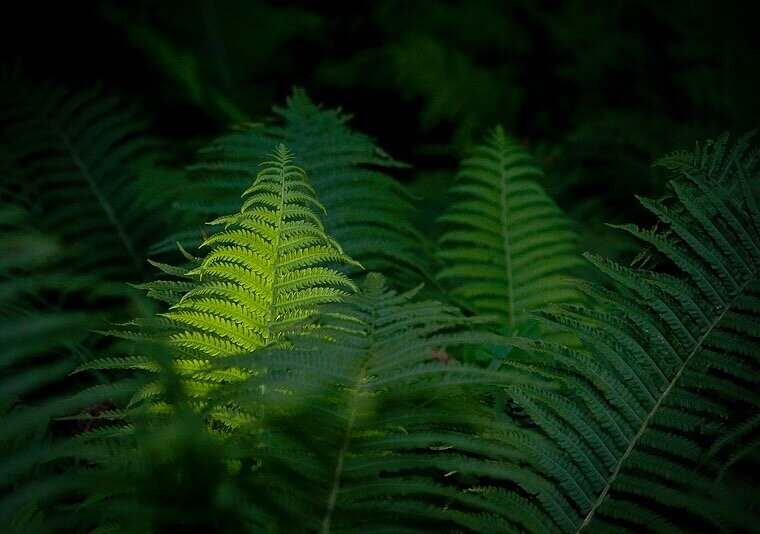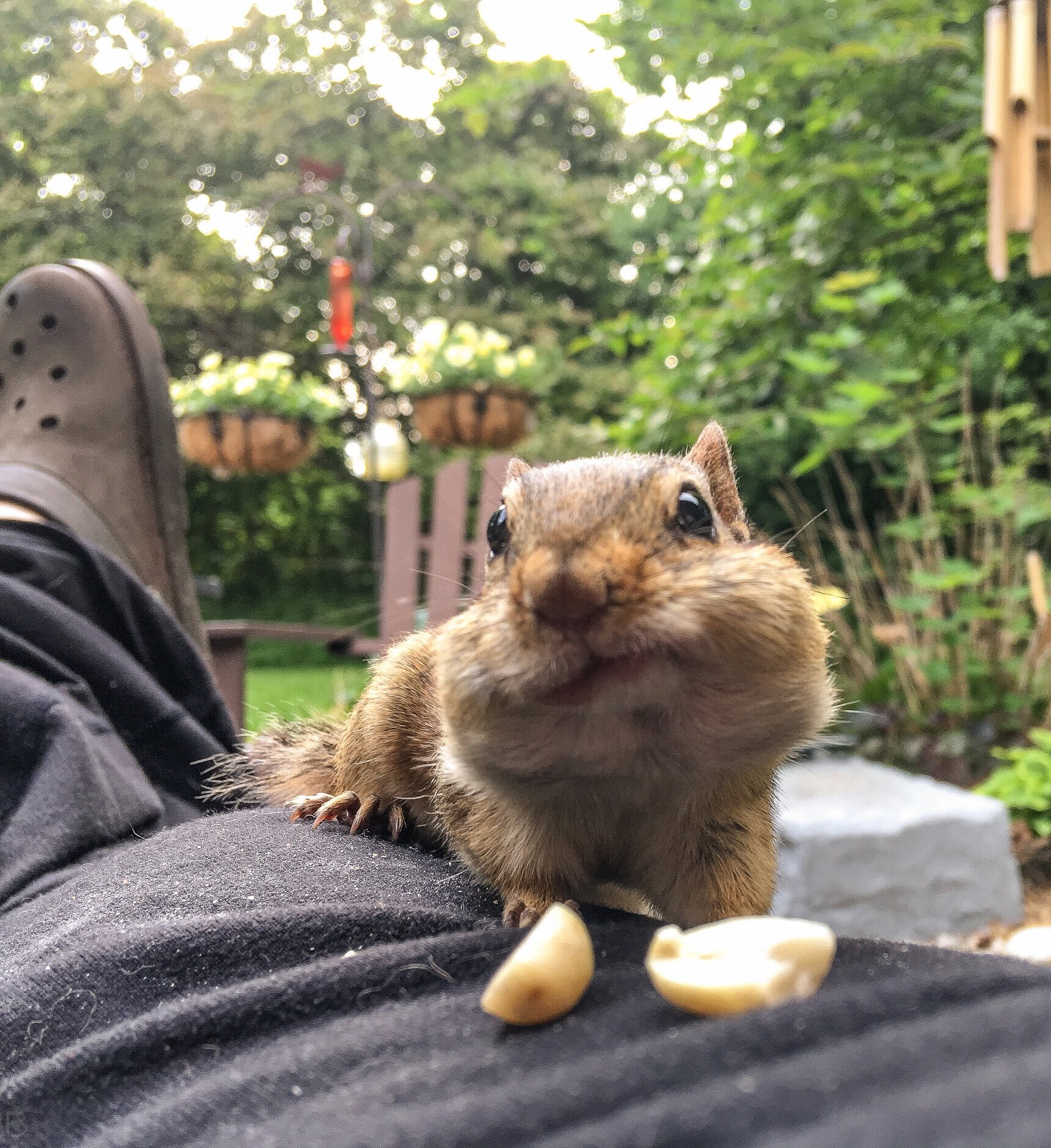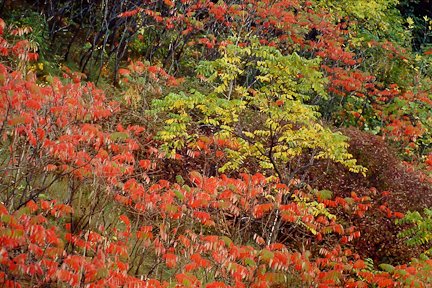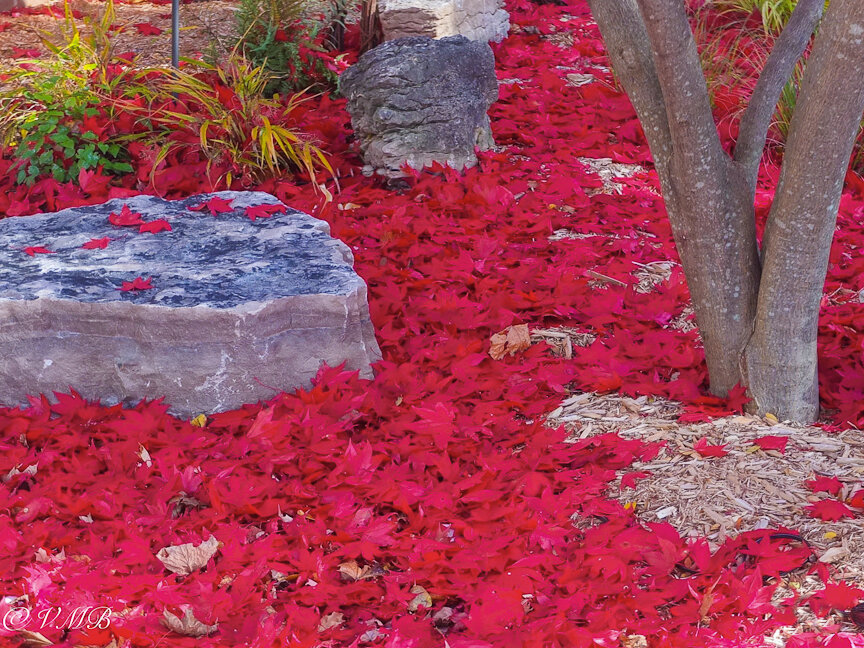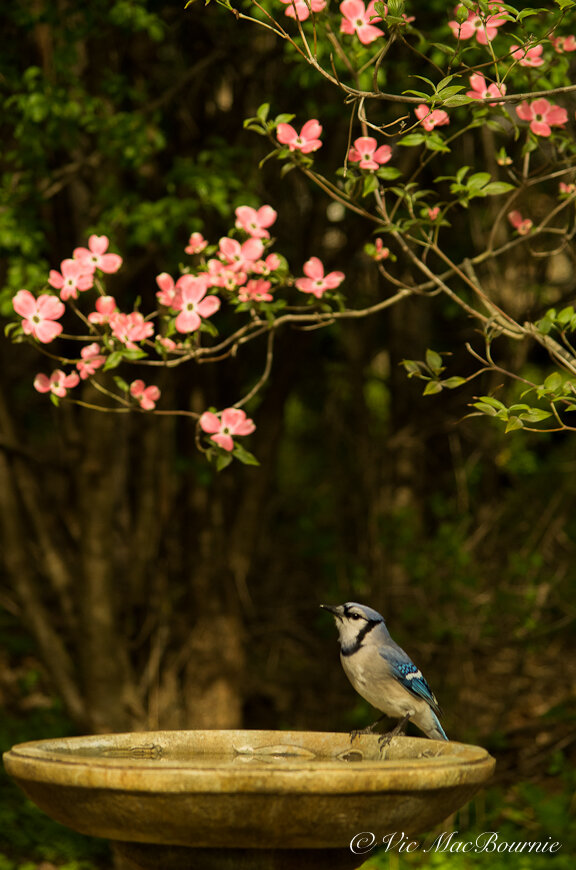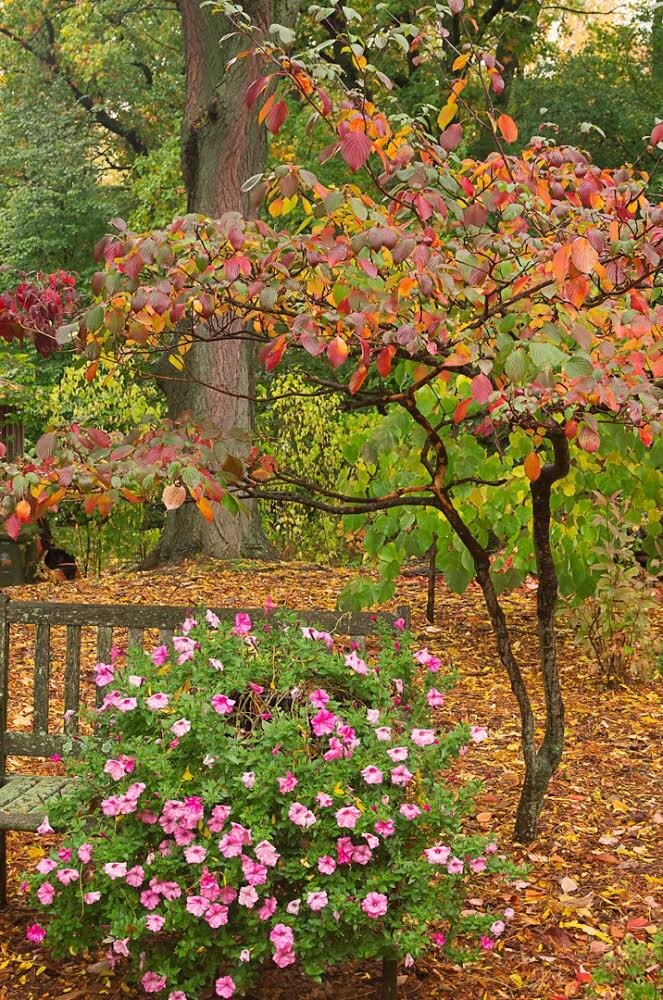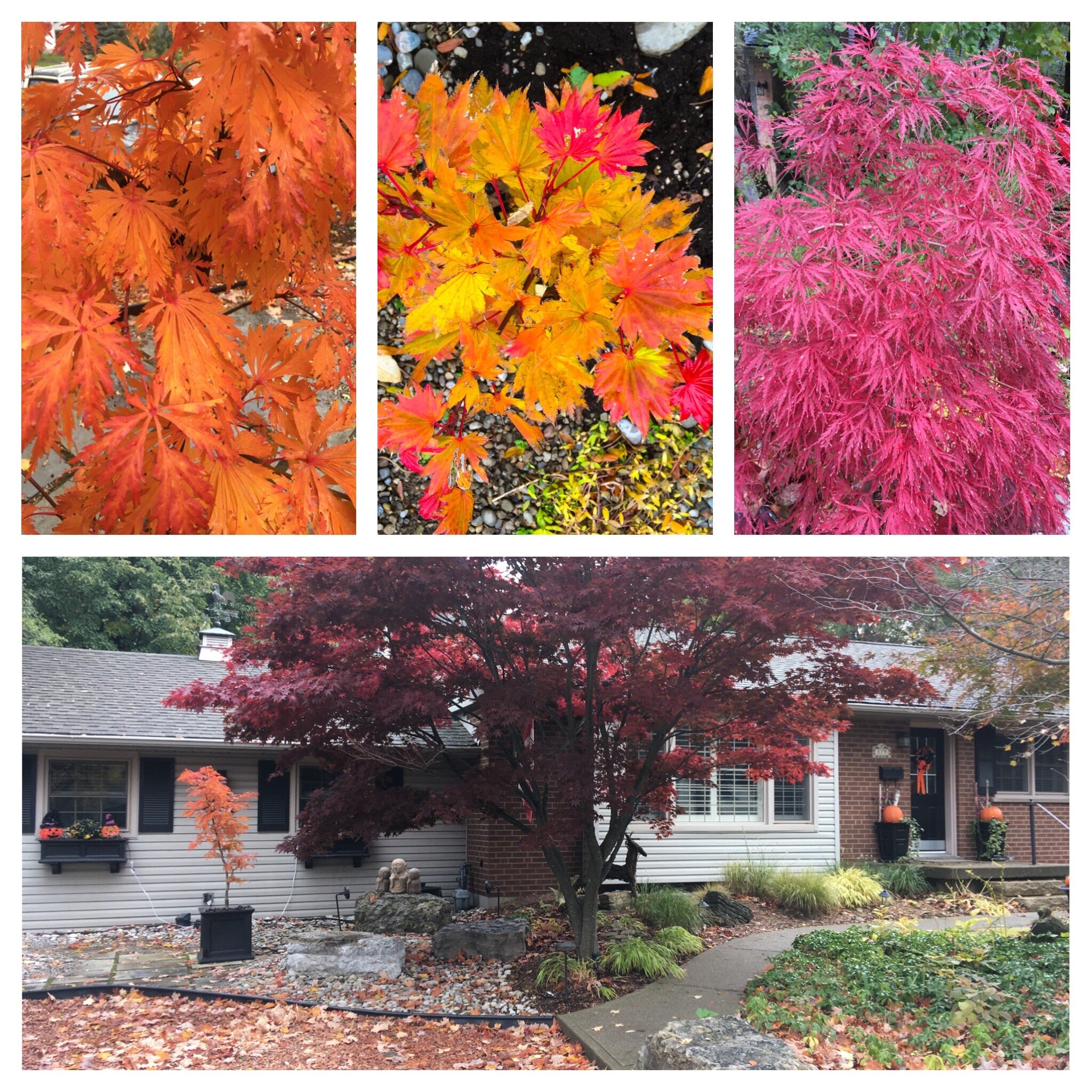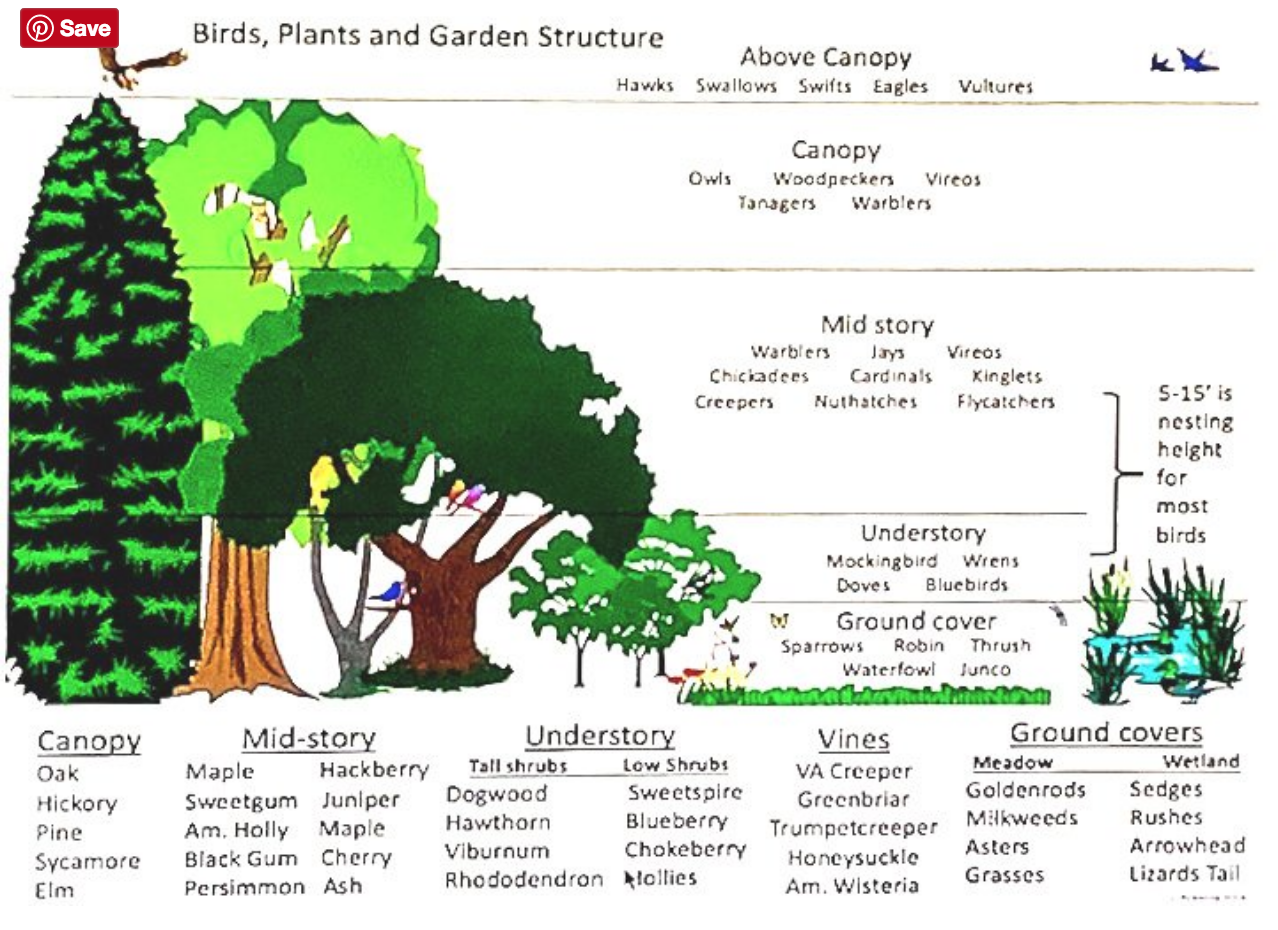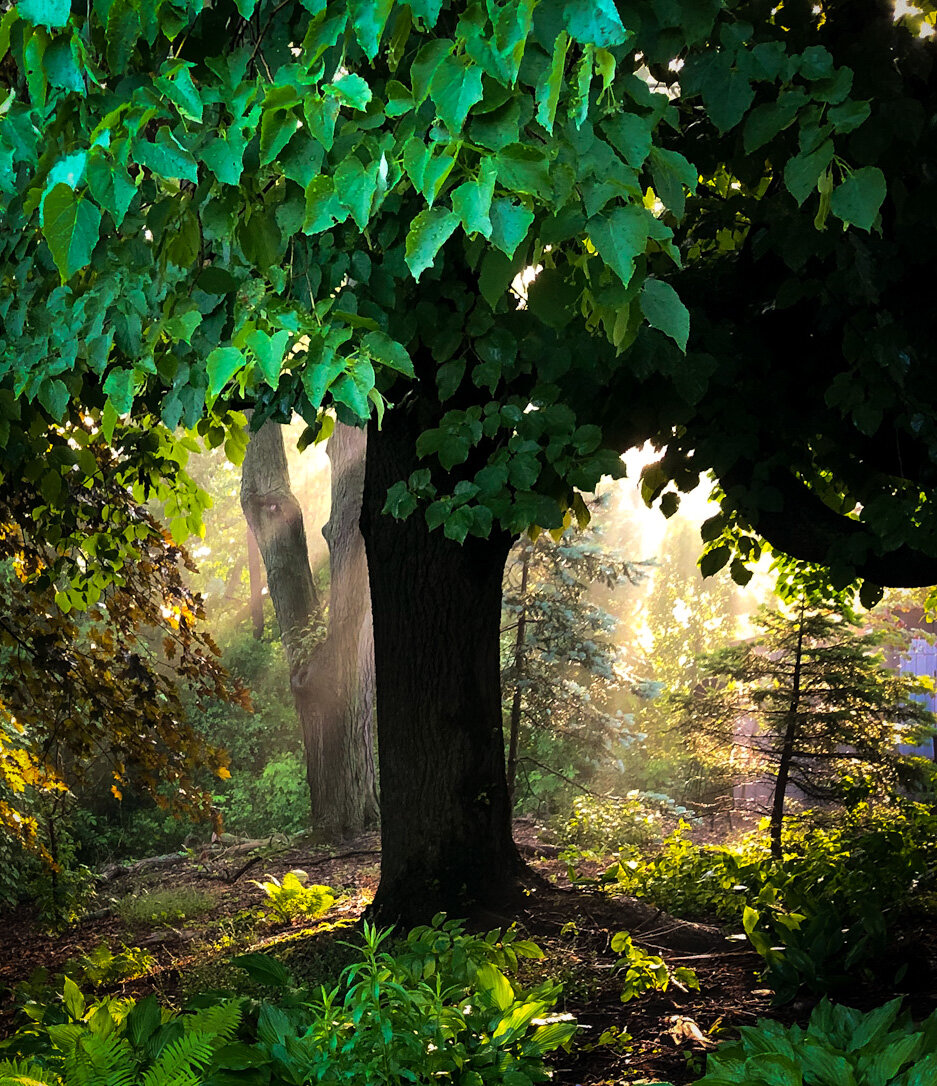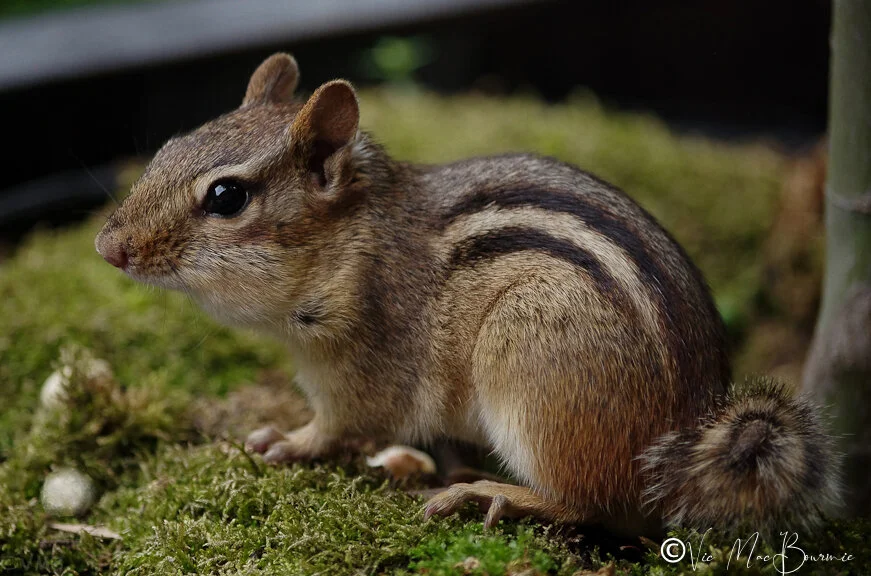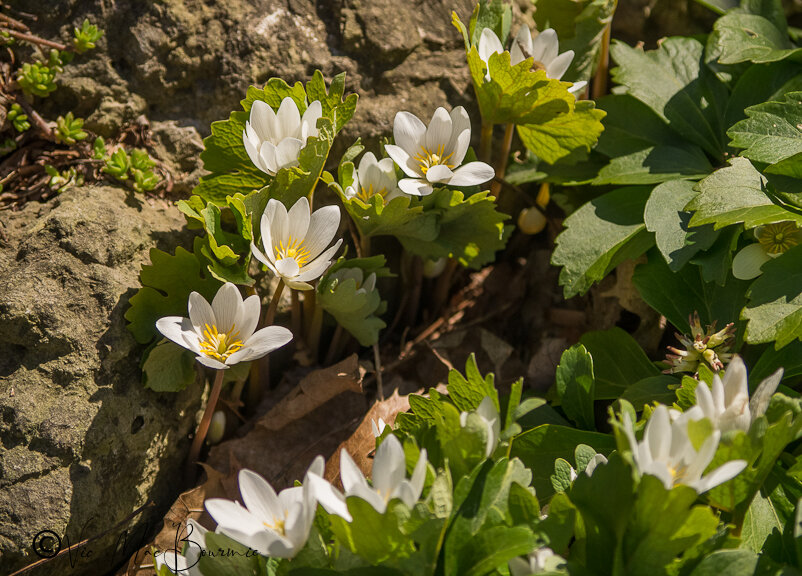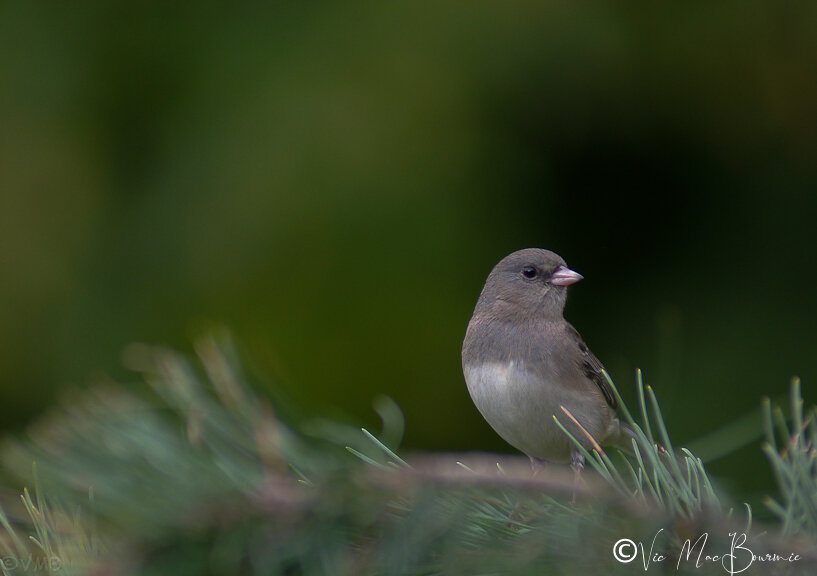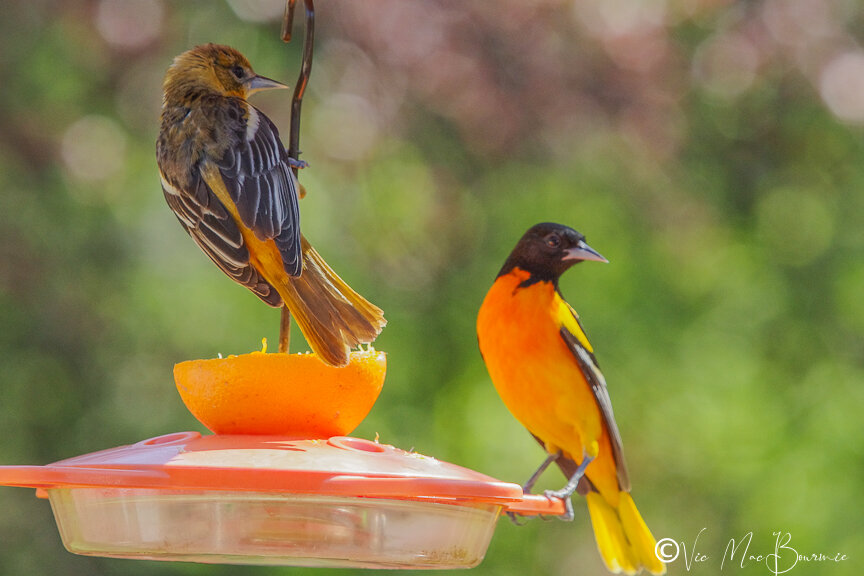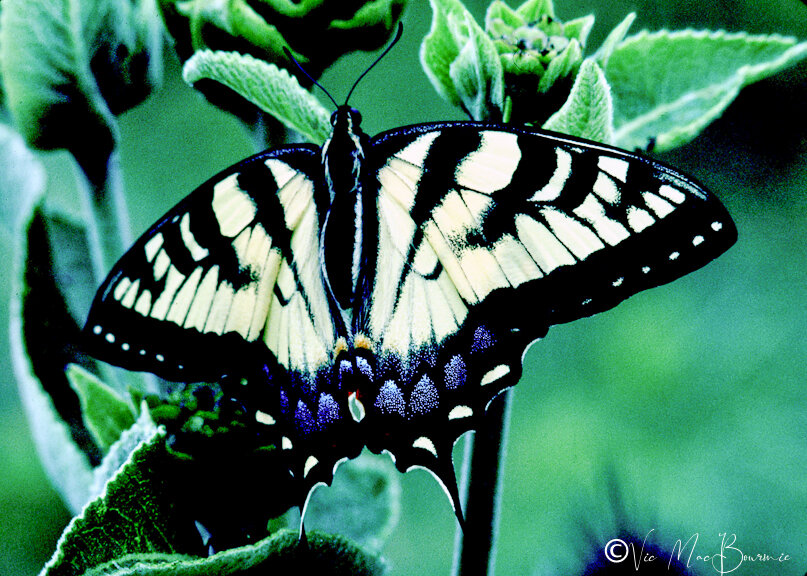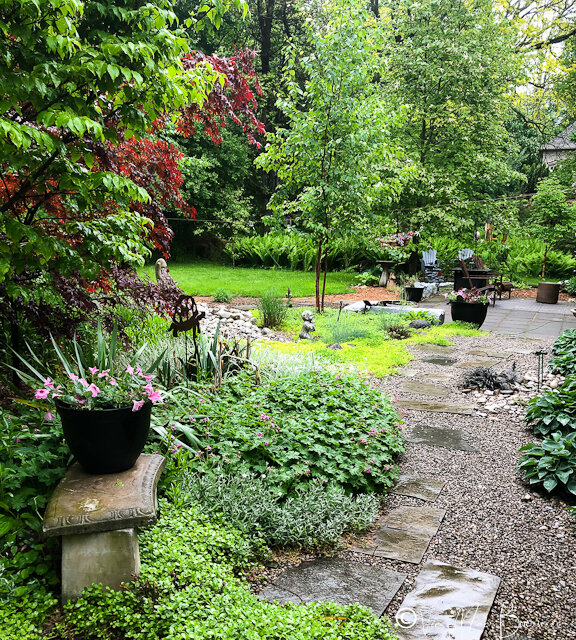How hard is it to design and create a woodland garden?
Building a Woodland garden can be a fun and rewarding experience. The key is letting go of what you may have perceived as the perfect garden and let nature do much of the work. Your focus should be in establishing layering the site with tall trees, understory trees, shrubs and ground covers. I hope this blog will help you achieve your dream.
Ideas and tips to bring backyard landscape ideas to life
It’s not easy being a woodland gardener.
I mean, how long can you sit and watch the chipmunks playing on the rocks or the birds feeding their young from the nearby birch branch. And those pesky hummingbirds buzzing around feeding from the cardinal flowers, not to mention the feeders hanging on the pole beside you.
Eventually you’ll need a break from not having to cut grass, deadhead the flowers and prune the shrubs to within an inch of their life.
So how hard is it to create a woodland garden? It’s important to know that a woodland garden design is most likely the easiest of all gardens to maintain providing you’re willing to relax a little. It’s the ultimate low-maintenance backyard landscape, but it will require some work to get it established at the front end. Plant trees, shrubs and get a ground cover established and then relax and learn to work with nature rather than against it.
It’s not all fun and games.
Add the burden of trying to satisfy our friendly chipmunk after she returns for what seems like her 100th visit to load up on peanuts.
Over in the corner of the garden, a doe rests in the tall ferns, while her two fawns romp around waiting for their day to begin.
Like I say, “this ain’t easy.”
And the noise! The birds, the bees, it’s all so overwhelming.
Nap time can’t come soon enough around here.
If this sounds good to you, it may be time to reconsider your backyard landscape design and use the information contained here on this website for backyard ideas and tips to create your low-maintenance landscape.
If you are looking for assistance, consider picking up The American Woodland Garden, by acclaimed author Rick Darke, Capturing the Spirit of the Deciduous Forest. It can be difficult to find, but is often available on the used market. Alibris, an U.S.-based used book seller, has copies of The American Woodland Garden for approximately $25 if readers are interested.
“So how hard is it to create a woodland garden? It’s important to know that a woodland garden design is most likely the easiest of all gardens to maintain providing you’re willing to relax a little. It’s the ultimate low-maintenance backyard landscape, but it will require some work to get it established at the front end. Plant trees, shrubs and get a ground cover established and then relax and learn to work with nature rather than against it. ”
If you are interested in exploring the world of shade gardening further, you might like my recent post on The Natural Shade garden.
Let the leaves fall to the ground and just leave them there over the winter.
The decaying leaves are important places for insects and pupae to overwinter. Their decomposition helps to build an earthy, humus-rich soil alive with micro-organisms.
Birds depend on the insects come spring to feed their nestlings. (Check out this post for the complete story on leaving your leaves where they fall.) (Check out this post on how to use fallen leaves to build your Woodland soil.)
The ultimate woodland wildlife garden incorporates layering. This illustration shows what birds primarily use the various zones.
Relaxing is key to building a woodland garden design
To build a Woodland garden, it’s important to be willing to let nature do its thing and not worry about every little weed (let’s just call it a wild flower shall we).
Instead of spending our days weeding, let’s, instead, ensure our Woodlands are filled with a variety of ground covers that stop weeds from taking over the garden beds.
Try a little Snow-in-Summer in a hot dry area to cover the ground with a living mulch. Not only is Snow-in-Summer a beautiful ground cover, it offers outstanding opportunities for some beautiful selective-focus photography.
If you do it right, you’ll have plenty of time to photograph the daily life of your garden and its visitors.
Where living ground covers are inappropriate, let’s use organic mulch like shredded bark, pine needles or composted leaves to cover the soil and restrict any weeds that want to poke up through the soil.
Instead of pulling weeds all summer, let’s relax with a glass wine on the patio and enjoy our feathered friends. Let’s use that time to focus on planting more native plants to attract more insects to our yards that, in turn, will bring more birds to our woodland gardens.
And those hostas that were eaten by our family of deer, let’s just rejoice in the fact we are keeping the local wildlife happy and healthy. (Click here for a gallery of the wildlife that visit our Woodland garden.)
If you can live with that, welcome to my woodland garden blog. It’s aptly named Ferns & Feathers for its abundance of both ferns and feathered friends.
If you care to join me, we’ll tackle this thing together; learn from one another’s shared knowledge and experiences. We can take some time to enjoy a discussion or two about building the woodland garden one tree at a time through layering – from the forest floor to the tips of the tallest trees.
Along the way we’ll share our top 3… top 5… top 10. (Click here for my five favourite bird items or here for my top 5 woodland garden books.
We’ll share what products work best for us, (like this Gorilla Cart or a blue tooth speaker) some time-saving tips, work-saving tips.
I’ll also be sharing garden photography tips, tricks and ideas to bring out the best images hiding in your garden. Doesn’t matter if your best camera is an i-phone, a sweet little point-and-shoot enthusiast camera model or a full-featured digital 35mm camera. I use them all to document our garden and, with a little luck, can pass on some wisdom from a hobby I’ve been enjoying most of my life.
And I’ve got some time after recently retiring from almost 40 years in the newspaper business. So, with all this time on my hands, my wife told me to find something to fill it with or else… I decided to combine two of my great loves – gardening and photography – into a fun little spot on the web for like-minded gardeners to pull up an adirondack chair and join me and Holly (our four-legged friend) to share some tall tales, our victories, failures and a decent glass of wine.
Okay, let’s get this show on the road.
Celebrate autumn: Six of the best fall colour trees for your woodland
Here are six of the best trees for fall colour in your woodland garden. Three are for the upper canopy and three are understory trees. Among the best trees for fall colour include the Sugar Maple, The Oaks and the Tulip Tree, as well as trees in the Dogwood family, serviceberries, and Japanese Maples.
Best upper canopy trees and understory trees for your garden
The thousands of yellow fern-like fronds that fall from our massive Locust trees create a natural ground cover much nicer than any cedar mulch.
Even on their short journey down, they become magical filling the air with yellow butterfly-like leaflets before gently reaching their destinations where, for a few short weeks, they form that natural ground cover.
It’s the magic of fall in the woodland garden.
Upper story trees like the Sugar Maple, Red Oak, Locust and Tulip Trees are excellent starting points. Under story trees like Dogwoods, Japanese Maples and serviceberries are perfect understory trees along with Hawthorns and Crabapples.
At our home we embrace the joy of fall colour.
The reds and burnt oranges of the Sugar Maples, the delicate orange of a lovely Japanese Maple alongside the deep rich reds of another Acer on the path leading to our front door. In the back, the yellow of the Birch trees begin early along with the Locusts followed a little later by our mature Linden tree that drops such a profusion of leaves that the ground is almost completely hidden.
Fall can either be a time of celebration, or a dreaded month’s long period where your only goal is to pick up every last leaf that dares to fall on your property.
Make it a celebration.
A woodland of Sugar Maple in full bloom can be breathtaking, but so too can a single tree in a woodland garden.
Embrace the fall colours on the trees, and when the leaves fall to the ground, celebrate them.
Leave them be on the ground for the insects, birds and other garden critters to celebrate. Enjoy the crunch under your feet and breathe in the damp, musty fall air as the leaves begin to break down into the hummus that feeds our woodlands.
As a woodland gardener, Fall should be one of the best times in your garden.
If it falls a little short, it might be because you are missing out of some of the best fall colour trees.
Get garden ready over winter
Three years with a bad hip made my ability to work in the garden extremely difficult. Following a hip replacement, I knew I had a lot of work to do to prepare myself for another garden season, and the best way to achieve that was to begin walking.
If you need to either get in shape for gardening or lose a few pounds, I highly recommend walking your way to health. Today, I walk 12,000 steps a day and I owe my new found health and ability to work in the garden to two devices – a Fitbit and Nordic Walking Poles.
The Fitbit allows you to track your increasing fitness levels, while the Nordic Walking Poles not only provide a full-body workout, but they also help you exercise longer while reducing stress on both your knees and hips.
Our Bloodgood Japanese Maple’s bright red leaves cover the ground in the japanese-inspired garden.
Best trees for fall colour in your garden
I’ve put together a grouping of our best trees for fall colour. Three trees that will form the upper canopy of your shade or woodland garden.
These are the big boys that grow tall and form the backbone of your woodland, providing shade for the understory trees, the shrubs and groundcovers all the while providing much needed shade for us gardeners.
Then, we’ll take a look at some of my favourite under story trees that give us a punch of colour closer to eye level.
The Sugar Maple (acer saccharum)
If you are lucky enough to live in the north east United States or Canada or any area where you can grow a sugar maple, your fall-colour dreams are complete.
We are fortunate to have a mature Sugar Maple at the front of our home arching over the driveway. Yes there are a lot of leaves to lug into the back gardens but the show is worth it my friends.
These are large, upper canopy trees that grow best in zones 3 through 7 but can be grown in zone 8 as well. Where they are happy, they can grow upwards of 75 feet tall with a spread of 30 to 50 feet.
In the bright autumn sun, their fall colour can be electric ranging from yellow to gold, burnt orange and red. During the fall rains the colours shine, especially against the almost black of the tree’s trunk and branches.
The Red Oak (Quercus rubra)
Yes, the best native wildlife tree is also one of the top performers when it comes to fall colours. (See my earlier story on why the Oak is the best tree to plant in your garden)
Here is another impressive, upper canopy tree that can also shoot up to 75 feet in zones 3-7, with a similar spread.
The leaves of the Red Oak fall a little short in vibrancy compared to the the Sugar Maple but still sport lovely shades of crimson, red and redish-brown colours in the fall that eventually fade to brown toward the end of fall.
The Pin oak (Quercus palustris), popular in urban landscapes, has similar fall colours to the Red Oak.
The Oaks wait until the maples have finished their fall show before adding a little more colour to our landscapes.
Anyone who has an oak, or one nearby, knows that their spent leaves can be problematic in the sense that they don’t break down in the same way as maples and most other trees. The tough leathery leaves don’t make the best mulch unless they are shredded and they take a long time to break down in a composter, so it’s best to move most of them into a corner of the yard where they can break down in time. This is also best for many forms of wildlife that depend on the oak leaves to overwinter.
In our garden, we are lucky that the oak tree is in a wilder part of the woodland in the back of the yard and the leaves are simply left to fall where they may.
Tulip Tree (liriodendron tulipifera)
In our yard, the tulip tree certainly has its moment in the spotlight.
This towering, fast growing native tree of the Carolinian Forest is native to the eastern United States and hardy to zone 5. It also needs to be on every woodland gardener’s radar, not only for its bright green spring foliage and lovely large, but subtle spring flowers, but for its dazzling golden yellow fall show.
These trees can easily become the largest tree in your landscape skyrocketing quickly to such heights as 70-90 feet and over time, in the right conditions, reaching up to even greater heights of 150 feet or more with a width of between 30 to 50 feet wide.
If you are looking for a fast grower to block an eyesore, the tulip tree is certainly one to consider. Keep in mind, however, that the tree will eventually require space in the landscape.
The Flowering Dogwood in its spring flowering regalia is matched only by its beautiful fall colour.
The Dogwoods (Cornus Florida and Cornus Kousa)
Some gardener may ask: Do Dogwoods even have fall color?
Given that these understory trees are so prized for their spring flowers and fall berries along with their elegant horizontal branching habit, they can’t possibly provide fall colour too can they?
Absolutely, and it’s magnificent.
The green ovate leaves of the dogwoods take on an attractive almost stunning reddish-purple in fall putting on a show that comes close to matching their spectacular spring show.
The combination of red leaves, often sporting hints of lingering greens, combined with its bright berries makes the flowering dogwood a must in any fall landscape. When the blue jays and cardinals come to snack on the berries. it’s hard not to admit the trees’ near perfection.
Another native dogwood, The Pagoda Dogwood (cornus alternifolia) is a small dogwood with exceptional fall colour.
The Flowering Dogood can be grown either as a large shrub or small tree in shady, moist rich woodsy soil in hardiness zones from 5-9. It grows to between 15-30 ft. tall and wide with elegant horizontal branching.
It’s considered native from around Maine into southern Ontario’s Carolinian zone and south into illinois and Kansans, and as far south to Florida and Texas.
The non-native Kousa Dogwoods fire up slowly in the fall with the rims of the leaves giving way to a pinkish almost peachy colour that transforms over time into bright red leaves overpowering the remaining green. The result can be spectacular.
All the while, the bright red raspberry-sized fruit continues to cling to the trees if the birds and squirrels have not yet got to them. In any case, the leaves can cling to the trees well into the fall, providing a spot of colour in what may otherwise be a stark landscape.
A collage of our Japanese Maples showing off their fall colours.
Japanese Maples (Acer palmatum)
For pure year-round colour in the landscape, there is no denying that Japanese Maples are at the top of any list.
In our front yard, our mature Bloodgood and delicate Beni Schichihenge compete with the Sugar Maple and a mature serviceberry and, quite frankly, steal the show. They are at their prime later in the season when their competition have completed their fall cycles.
The Beni Schichihenge that features summer foliage of blue-green with cream and rose variegation is as beautiful in its fall show as it is in its summer greens. The soft orange glow of its delicate leaves is a favourite that transforms before our eyes from the comfort of our front picture window. (See my article about creating a window into your woodland)
In the backyard, Japanese Maples take a back stage to other trees for most of the year, but still put on quite a show when the dark burgundy leaves of our Bloodgood Japanese Maple turn fire-engine red right before they drop.
There are too many Japanese Maples to list here, but rest assured that most are excellent fall performers worth investigating.
The serviceberry for fall colour
Even if the serviceberry had little to no fall colour, it would be a star in your landscape. Its value to wildlife (primarily its large purplish berries) and its compact growth habit makes it a highly prized understory tree in today’s urban areas.
That’s to make no mention of the clouds of pollinator-friendly white blooms that cover the tree in early spring. (See my earlier story on the Serviceberry here).
This tough little tree that grows up to 20 feet with a width of between 4 and 15 feet is drought tolerant and grows best in zones 2 through 9.
Fall would not be the same without this lovely tree sparkling in our yards. I consider it such a key component of our woodland wildlife garden that we have several specimens in the backyard and one large mature single-stem tree in the front yard.
Fall colour can vary from yellow to orange to red and everything in between. Often it’s the in between that can be the most striking, when the red leaves are still rimmed with yellows and oranges helping to give the trees a lovely glow in the fall rains or misty mornings.
Tying it all together
In a woodland garden, where, for the most part, shades of greens and textures dominate the summer season, it’s fall that can become the most dramatic season of the year. It’s the time the subtle textures are combined with the bright, vibrant colours of our Maples and the more delicate leaves of the oaks, serviceberries and dogwoods. These combine with the delicate, straw hues of ornamental grasses to create a texture unmatched in so many other garden styles.
Embrace fall. Get out into the garden to admire your natural surroundings and take note of combinations that work so that you can duplicate it in other areas of the garden.
And finally, take a drive into the country. Look for roads that meander through natural forests and woodlands to appreciate – and take notes – how mother nature chooses to celebrate fall.
Different stages of the Sumac in its fall colours showing the greens and yellows transforming into vibrant oranges and reds. If you have a corner of your yard you don’t mind letting Sumac colonize, you won’t be disappointed.
Sumacs provide fall colour and food for birds
Finally we can’t forget about the Sumacs, (staghorn and velvet) which not only provide excellent fall colour in a range of oranges, reds and greens, they are also an important source of food for birds that feast on their berries in late fall through winter.
These small, colony-forming shrubs or small trees and velvety twigs are as much standouts along roadways as they are in your garden. The female sumacs sport yellowish-green flowers in summer that come to life as fuzzy red berries in erect, pyramidal clusters in fall and persist throughout the winter providing a good food sourcefor birds.
In the garden, these native plants need to be kept in check from their wondering and colonizing habits.
More links of interest
Finding inspiration in the natural woodlands.
How to design a woodland wildlife garden for a small yard
Can a woodland garden work in today’s smaller urban or suburban backyards. Absolutely. In fact, for many reasons, a woodland garden can be the perfect choice for today’s smaller backyards, providing the ultimate low-maintenance landscape design.
Backyard tips and ideas to design and rewild a small woodland garden
A woodland and wildlife garden is not measured by the number of trees or the size of your backyard.
Size certainly plays a role, but a woodland garden design has always been as much about an experience with nature as it is about a physical space.
My garden, for example, is not huge. I am lucky that it sits on about a half-acre lot in an urban area, but is surrounded by acres of woodland connected to a large conservation area.
How many of us have taken great joy sitting beneath a small tree in a natural woodland, birds flitting about busily searching for insects to feed their young?
Just imagine reliving that experience every spring in your own backyard landscape.
It’s an experience that can be created in a tiny backyard as easily as it can on a sprawling acreage property.
Can you create a woodland garden design in one of today’s typically compact backyards? Absolutely. Not only can you create a stunning woodland garden in a small backyard, in many ways rewilding a successful woodland design in today’s smaller yards is much easier. Use neighbouring trees as part of a borrowed landscape and as an upper canopy and then create your understory with a few smaller trees, and shrubs. Now, add an area of shade-loving plants and a woodland ground cover. A bench to enjoy the garden and you are well on your way.
“A way to make a small garden unusually satisfying is to focus on the stimuli reaching two or more of the senses simultaneously – and with equal intensity.”
The woodland garden can be a beautiful but natural retreat for gardeners looking for a low-maintenance garden.
Whether you do-it-yourself or hire a landscaping company, rewilding the smaller garden helps to focus the garden designer on what factors make up a woodland garden and how to create woodland vignettes (earlier post) within those small spaces.
If you are looking for more help in the process of building your woodland garden, you might want to check out the informative book The Woodland Garden by Robert Gillmore, who explains how to turn an existing woodland area into a low-maintenance, lush woodland garden that brings the world of nature into your own yard.
In addition, consider picking up The American Woodland Garden, by acclaimed author Rick Darke, Capturing the Spirit of the Deciduous Forest. It can be difficult to find, but is often available on the used market. Alibris, an U.S.-based used book seller, has copies of The American Woodland Garden for approximately $25 if readers are interested.
In a larger garden, too much focus is often put on just keeping up with garden chores to perfect the vignettes that make the woodland garden such a special place. A large garden may be made up of several smaller vignettes or garden rooms, while a smaller suburban garden may include just two garden rooms or vignettes and a tiny urban garden might incorporate only a single woodland garden vignette.
Landscape designer Angela den Hoed has taken a typical suburban backyard and created a magical woodland garden for readers of Ferns & Feathers.
Here at Ferns & Feathers we actually provide our readers with a highly detailed landscaping plan suitable for today’s typically-sized backyard. By simply following the design, readers can either create the woodland garden themselves or use the plan as part of a larger garden plan. For the complete details of the plan, including a list of native plants to consider, check out my post here.
This illustration shows the ideal layering in a woodland garden and the birds that take advantage of the different layers.
How to create and rewild your small yard into a wildlife garden
Unlike a typical or traditional garden, a woodland wildlife garden is primarily a shade garden. It’s important to note, however, that a shade garden is not necessarily a woodland garden. Within the woodland garden, there may be sunny borders or openings in the forest canopy that provide gardeners the opportunity to experiment with sun-loving plants.
It’s these openings that give gardeners an opportunity to plant native berry-producing shrubs for birds and native flowers for pollinators in the wildlife garden. The edges of the woodland also provide ideal areas to explore berry-producing shrubs and other plants that attract insects and provide nesting habitat for birds and small mammals.
A woodland garden’s primary feature is a layering effect. From the tallest trees in the upper canopy to the mid canopy of smaller shade loving trees, down to the shrubs, perennial flowers and finally to the ground-cover layer.
Below the ground cover is the all-important soil that gives life to insects, invertebrates and microbes that form the roots of our woodland garden’s success. (I explore the details of creating the ultimate woodland garden soil in other posts that will be linked to at the bottom of this post.)
Together, this combination engages our senses and let’s us know, even subconsciously, that we are in a special place.
If you are still unsure whether you want to create a woodland garden, consider that once the garden is designed and installed, it should be an extremely low-maintenance garden that requires very little effort on your part to keep it looking its best.
Why you might ask?
Why is a woodland garden considered low-maintenance
Chelsey garden show Gold medal award-winning garden designer Mary Reynolds’ explains it best in her book The Garden Awakening.
Consider her explanation about the land we are looking to build our gardens on: “Most land that is used for agriculture and gardens has the same core truth: it strives to become a mature woodland – a stable and intelligent ecosystem that has evolved over many thousands or even millions of years.”
In her book, The Gardening Awakening, Mary explains that: “Achieving a classic woodland ecosystem is impossible for most people because the individual plots of land are too small. However, it is possible to create a replica of a complete woodland ecosystem in smaller places. “
Mary argues that unless land stewards, such as ourselves, “allow the land to express its own truth, we are doing it an injustice.”
Not only are we doing it an injustice, we are also working against Mother Nature.
By working with nature, especially in a small garden where the amount of work is already more manageable, we create a very low-maintenance garden that more or less looks after itself and does not require hours of weeding, garden cleanup and lawn maintenance.
The design and creation of the small woodland garden requires a little more attention to detail.
To create a successful small woodland garden it becomes even more critical to maximize every opportunity to explore our senses. Garden designer Vince Healey, who specializes in creating gardens for children and hospices for the dying, points out that: “A way to make a small garden unusually satisfying is to focus on the stimuli reaching two or more of the senses simultaneously – and with equal intensity.” An example Healey provides is a stand of aspens blowing in a breeze. The rustle and the shimmer of the leaves appeal to both your sense of hearing as well as the visual beauty the stand of trees provide.
In my garden, similar to Healey’s aspen example, a stand of three clump birch trees form a canopy over a bubbling rock and dry river bed. The combination of the trees together with the sound and visual stimuli of seeing the water bubble out of the rock, works hard to appeal to a visitor’s multiple senses.
In a much smaller garden, this birch grove and bubbling rock underplanted with a tiny Japanese maple, maybe a native cranberry bush that flowers and provides a profusion of red berries in the fall, a container or small planting of annual or perennial flowers, and a ground cover of moss or thyme is enough to form a woodland garden in itself. Add a bench where you can sit under the canopy of birch, and you have recreated the memorable experience you had that spring day in the forest.
A simple garden path in our woodland garden made from pea gravel and square-cut flagstone. Simple materials and natural products are preferred.
Healey writes that this sensual stimuli appealing to more than one sense with equal intnesity: “has the effect of mesmerizing the viewer.” And, don’t we want all our visitors to be mesmerized by the beauty of our garden?
Because trees will form an important part of your compact woodland garden, it’s important to consider trees with the best bark features. Tree bark itself can appeal to so many senses. Birch trees, especially river birch (Betula nigra) with its subtle copper-coloured bark that peels profusely away from the trunk in shaggy strips, and European White birch (Betula pendula) that brings a touch of elegance with its stark white trunks and fine papery peeling bark, are good examples of trees that appeal to multiple senses. In a large garden, they could form part of the understorey. In a smaller woodland, they can take the place of the top canopy.
Other trees to consider for their bark features might include pine trees such as the Lace-bark pine (Pinus bungeana) with a wonderful mottled appearance. The bark flakes off to reveal patches of green, cream and red. Consider also the Scotch pine with its cinnamon brown bark and, of course, our native Northern White pine whose bark as a young tree is thin, greyish-green and smooth but gives way to a mature tree sporting thick bark with broad ridges and dark-tinged scales. Our white pine’s bark may not be the most exciting, but the tree’s other features make it a standout in any woodland garden. The blue-green needles are feathery soft with a heavenly aroma when crushed. The combination of the soft needles and strong aroma appeals to so many of our senses.
Beeches are known for their smooth, gray or shiny bark. Paperbark maples (acer griseum) are especially noteworthy as a small under storey tree with outstanding curling, papery strips of cinnamon brown bark. Few trees are more at home in the woodland garden than the flowering dogwood which, besides offering a profusion of outstanding white flowers or bracts followed by red fruit, also boasts an impressive bark with an amazing rectangular pattern on its trunk that looks almost reptilian. The Kousa dogwood has gray- and tan-patched bark. The bark combined with its profusion of cream flowers and outstanding red fruit in fall make it a show stopper in the woodland garden. I have several in our garden, despite the fact that it is no a native tree.
For more on native Dogwood trees and shrubs, be sure to check out our full story here on six of my favourite dogwoods for the woodland garden.
Few trees can compare to the Redbud, whether you choose multi-stem or single-stem versions, for its spectacular spring magenta flowers that cover its branches early in the season. For more on the outstanding Redbud tree (Cercis Canadensis), check out my full story here
Five important design elements of a woodland garden
1) Create at least one natural garden path that either takes you to a special place in the garden or leads visitors around and through it.
2) Strive to create multiple layers in your garden. The woodland garden requires an upper canopy of large shade trees, followed by a mid-canopy of under storey trees like dogwoods or serviceberries above a layer of mid- and small-size shrubs followed by ground covers and groupings of perennials.
3) Include natural-looking garden art. A large moss-covered boulder, an artistically twisted branch or a natural-looking stone bird bath. Alternatively, a copper bird house or bird bath can add an exquisite touch to your woodland and age gracefully along with the garden.
4) Always strive to use native woodland plants wherever possible. Not only do native trees, plants and shrubs look appropriate in the landscape, they usually perform at their best if they are planted in the right location. Even more importantly, they are hosts to native insects and pollinators that provide critical food to our native birds.
5) Use a variety of ground covers to ensure your soil is never exposed to direct sun. Protecting the soil is critical to building microbial life that will ensure it can provide your plants and trees with life-giving energy. Organic and non-organic mulches can take the place of living ground covers. (I will link to a separate post on using mulches at the bottom of this article.)
A subtle approach is best
It’s important to incorporate a subtle approach to woodland gardening. Nature is never gaudy. Although gardens appeal most strongly to our visual sense, the woodland gardener needs to take a step back and control the urge to create large swaths of violently coloured flowers to make a strong visual statement. Over doing this can easily end in a visual assault.
Nature rarely makes a visual assault, and neither should the woodland gardener.
Woodland gardeners need to take pleasure in the simple textures of leaves, subtle shades of green highlighted by the quiet colours of native wildflowers, grasses and sedges.
Angela den Hoed’s woodland garden landscape design incorporates a critical element that belongs in every woodland garden. It’s a path that takes visitors around and through the garden so they can experience its subtle beauty. In many traditional gardens viewers can afford to simply stand back and experience the riot of colour. The woodland, however, begs you to come inside and engage the senses in a very intimate way.
The value of the woodland path
In his book Landscaping with Nature, Using Nature’s Designs to plan your Yard, Jeff Cox writes about the woodland path and notes that a walk in the woods can be built into even small backyards.
“Walking down a woodland path is one of our favorite ways to enjoy nature. The path is usually shady, and we enjoy the cool, protective shade thrown by a canopy of trees… Interesting and beautiful plants on either side of us provide plenty to look at as we walk the path. Following the path is an adventure ; we never know what’s around the bend…. And as we walk, we have time to think, dream, or just listen to birds’ songs.”
The path itself does not have to be large. It should blend in to the natural landscape rather than drawing attention to itself. There is no place for concrete and even a more subtle brick pathway is probably unnecessary in the woodland.
A simple grass pathway cut occasionally throughout the summer, or a path made by putting down a thick layer of shredded cedar mulch or pine needles will provide a more natural pathway that is at home wandering and weaving through the woodland garden.
In a very small urban yard, the garden path could be the main feature of the entire backyard, taking the visitor from the home’s small patio and winding its way through the garden features to the back of the property. Along the way, you might have to walk around a clump serviceberry (Amelanchier laevis) underplanted with trilliums and irish or scotch moss. You may pass a small pond or, even simpler, a beautiful copper bird bath and garden seat that provides a quiet place for you to sit and take in the birds that have discovered your small oasis in the heart of the city.
Along the path in your woodland try to use native plants. In an Eastern United States, Southern Ontario (zones 5-7) path, Jeff Cox suggests planting a Scarlet oak, and underplant it with a bed of maidenhair ferns (Adiantum pedatum) or hay-scented ferns (Dennstaedtia punctilobula). He explains how the oak (the best tree to attract and provide habitat for insects, caterpillars and pupae vital for the survival of our native birds) will “provide partial shade for the ferns as it arches over them.”
This area could also be planted with spring bulbs for early spring colour adding that late colour will “take care of itself with the oak’s blazing scarlet red foliage.” Behind the oak, he suggest a tall high bush cranberry (viburnum trilobum), with its showy red berries in the fall.
On the left side of the path, Cox suggests planting an eastern hemlock (Tsuga canadensis) and white pine (pinus strobus). These two evergreens will provide a dark background for the foreground planting of birch trees and serviceberry (Amelanchier laevis). The birch bark and early spring flowers of the serviceberry will “glow against the evergreen background.”
Virginia bluebells (Mertensia virginica) planted among the birches and serviceberries will provide delightful flowers in the spring.
In other areas of the country, with different garden zones, these plants should be substituted with plants native to that zone.
Angela’s garden pathway in our second Naturally Native newsletter is quite different from Jeff Cox’s plan. It takes the visitor around the entire garden and offers quiet places among areas dedicated to childrens’ play and family gatherings.
The two designs are good examples of how small garden areas are not limited to a deck a patch of grass and a decrepit play structure in a corner of the yard.
With proper planning, we can create the low-maintenance garden of our dreams, whether we live on a large rural property surrounded by forests, or in a small urban or suburban garden surrounded by a sea of high-maintenance grass.
If you are considering creating a woodland garden, or simply converting an area of your existing garden into a woodland retreat, be sure to sign up for our free newsletter.
The newsletter focuses on attracting and photographing backyard birds using native plants in a woodland garden setting. In addition to providing readers with a detailed woodland garden design plan, the 13-page newsletter features a DIY article on creating a large, reflection pond/backyard photo studio that includes an epic hack of a common household product. In addition, we feature tips on feeding specific backyard birds and the tools needed to get up close and personal with our feathered friends. You can sign up at the bottom of the Ferns & Feathers home page.
Important links for the woodland gardener
Below, I have included a list of links for anyone who would like to further explore the information mentioned in the above article.
• In case you missed the link earlier, Landscape designer Angela den Hoed has designed a full-featured, detailed Woodland garden plan for Ferns & Feathers readers. Here is the link for a comprehensive design for a typically-sized woodland garden.
• Landscape designer Angela den Hoed. See my earlier post about her here. Go to her website here
• Chelsea Award winning garden designer Mary Reynolds. See my earlier post about her book here. Go to Mary’s popular website here where she promotes land stewards to create natural Arks to help protect and restore our natural environments.
• Earlier post on Garden mulch: organic vs non-organic. Link here to my earlier post.
• Earlier post to my favourite ground covers for the woodland garden. Link here to my earlier post
• Earlier post on using a local woodland as inspiration for the woodland garden design. Link here to my earlier post.
• Jeff Cox’s book Landscaping with Nature. Amazon link here
• An earlier post on Five great books for Woodland Gardeners. Link here for my earlier post.
• An earlier post on the book Bringing Nature Home about why Native plants are critical to saving our birds. See the link to my earlier post here.
• Another book definitely worth considering is The American Woodland Garden by Rick Darke. Amazon link here
This page contains affiliate links. If you purchase a product through one of them, I will receive a commission (at no additional cost to you). I try to only endorse products I have either used, have complete confidence in, or have experience with the manufacturer.

